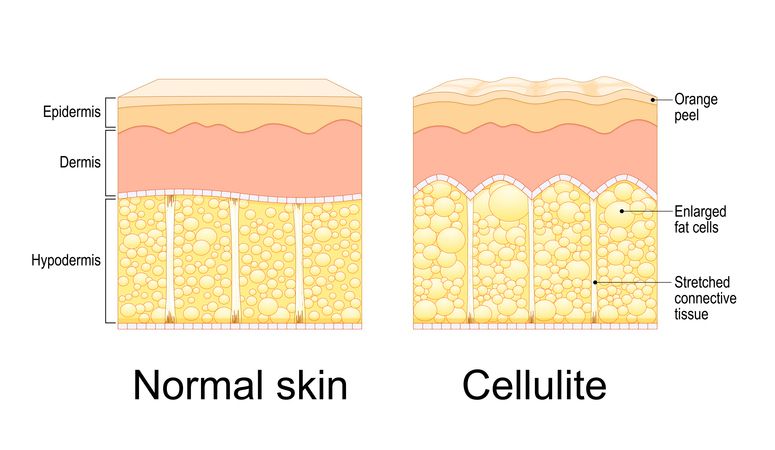
Author: Natalie Ng|Updated: 29 April 2025
Vellus hair, also called peach fuzz, is the fine, nearly invisible hair covering most of your body. Unlike terminal hair, which is thicker and pigmented, these tiny hairs are soft, short, and usually no longer than 2 cm. They help regulate body temperature and manage sweat by trapping moisture on the skin surface. You’ve probably noticed vellus hair on your face, neck, or arms. While it’s completely normal, some people prefer to remove it for smoother skin. Methods like dermaplaning can take off these fine hairs without changing how they grow. And no, shaving vellus hair won’t make it grow back thicker—that’s just a myth. But why do some vellus hairs turn into thicker, darker strands? Can removing them damage hair follicles? And what about those tiny brown bumps some people get? Keep reading to learn how vellus hair changes, what affects its growth, and the best ways to manage it.

Difference Between Vellus Hair and Other Body Hair
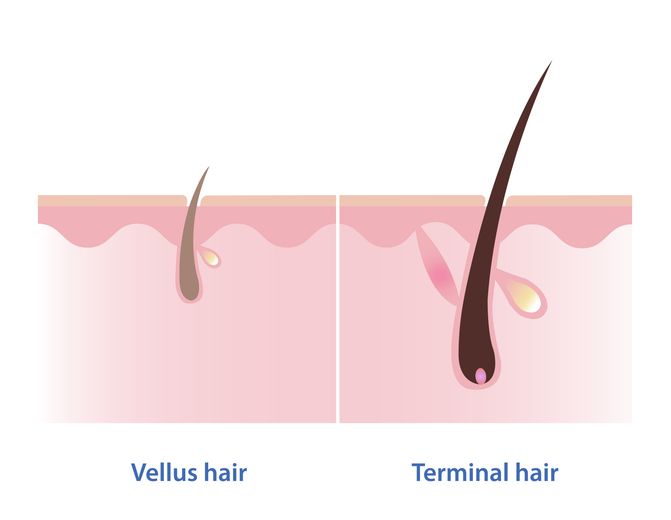
Vellus hair, or peach fuzz, is different from other types of body hair in several ways. These fine, soft, and nearly colorless hairs grow in most areas of the body, except for places like the palms and soles. Unlike terminal hair, which is thick, dark, and long, vellus hairs are short and barely visible.
Vellus Hair vs. Terminal Hair
The main difference between vellus hair and terminal hair is thickness and pigmentation. Vellus hairs are thin and light, while terminal hairs are coarse and pigmented. Terminal hair grows on the scalp, eyebrows, and pubic region, while vellus hairs cover areas like the forehead, cheeks, and arms.
How Vellus Hair Changes Over Time
During puberty, some vellus hairs turn into terminal hair due to hormonal changes. This process is more noticeable in males, where androgens cause hair to grow on the face, chest, and other areas. In females, hormonal imbalances or conditions like polycystic ovary syndrome (PCOS) can also lead to vellus hair becoming thicker and darker.
Why Some Vellus Hairs Become Terminal Hair
Hormones like testosterone and androgens influence hair growth. In areas like the upper lip, chin, and scalp, vellus hairs can turn into thicker strands. This shift can also happen due to aging, medications, or medical conditions that affect hair follicles.
While vellus hairs may seem insignificant, they play an important role in regulating body temperature and sweat. But what happens when they change, or when certain conditions cause unusual hair growth? Keep reading to learn more about how vellus hair growth patterns shift and what affects them.

Functions of Vellus Hair
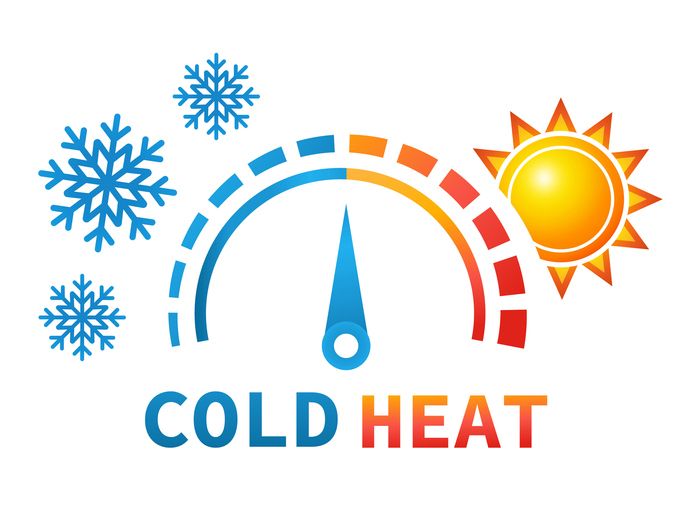
Vellus hair may seem unimportant, but it plays several key roles in the body. These fine hairs help regulate body temperature, manage sweat, and protect the skin. They also respond to hormonal changes, sometimes turning into terminal hair over time.
1. Regulating Body Temperature
Vellus hair helps your body maintain a stable temperature by trapping a thin layer of air close to the skin. This provides mild insulation, preventing heat loss in cooler conditions. When you're warm, these hairs allow sweat to evaporate efficiently, keeping you cool.
2. Managing Sweat and Sebum
Each vellus hair is connected to a sebaceous gland, which produces sebum—your skin’s natural oil. This oil helps keep the skin hydrated and acts as a barrier against dryness and irritation. Vellus hair also helps wick sweat away from the skin, improving cooling and preventing sweat buildup.
3. Protecting the Skin
Although vellus hair is thin and nearly invisible, it forms a subtle barrier against environmental debris, bacteria, and small particles that might otherwise settle on the skin. This reduces irritation and helps keep the skin surface clean.
4. Sensory Function
Vellus hair is connected to nerve endings that help detect light touch and movement on the skin. This enhances sensory perception, making you more aware of external stimuli like changes in air movement or small objects brushing against the skin.
While vellus hair serves important functions, its growth and appearance can change over time due to hormones, age, and health conditions. But what happens when vellus hairs turn into thicker strands or when hair follicles become damaged? Keep reading to learn how these tiny hairs evolve and what affects their growth cycle.
Read More
Book Now to Experience
A3 Laser Hair Removal Treatment
1 Minute Self-Registration
Date should not be before minimal date

Common Myths and Facts About Vellus Hair

Many misconceptions surround vellus hair, or peach fuzz. Some believe removing it makes it grow back thicker, while others think it can turn into stubble. These myths often come from confusion between vellus hair and terminal hair. Understanding how vellus hair grows and what actually affects it can help you make better decisions about hair removal and care.
Myths About Vellus Hair
Myth 1: Removing Vellus Hair Makes It Grow Back Thicker
One of the most common myths is that shaving or dermaplaning vellus hair causes it to grow back darker or thicker. In reality, hair removal does not change the structure of the hair follicle. When vellus hair grows back, it may feel slightly thicker at first because of the blunt edge left by shaving, but the hair itself remains the same size and color.
Myth 2 : Vellus Hair Removal Causes Stubble
Since vellus hair is naturally fine and soft, it does not turn into stubble after removal. Unlike terminal hair, which has a thicker hair shaft, vellus hair remains short and light, even when it regrows.
Myth 3 : Hair Removal Turns Vellus Hair Into Terminal Hair
Vellus hair only turns into terminal hair due to hormonal changes, not because of shaving, waxing, or other removal methods. Puberty, aging, and conditions like PCOS can cause some vellus hairs to become darker and coarser, but hair removal has no effect on this process.
Facts About Vellus Hair
Fact 1 : Vellus Hair Helps Regulate Body Temperature
These tiny hairs trap air close to the skin, providing light insulation. They also help sweat evaporate more efficiently, preventing overheating.
Fact 2 : Vellus Hair Covers Most of the Body
Unlike terminal hair, which grows on the scalp, eyebrows, and pubic area, vellus hair is found almost everywhere, except the palms and soles. It plays a role in protecting the skin by keeping it clean and reducing irritation.
Fact 3 : Hormones Control Vellus Hair Growth
Androgens influence how vellus hair behaves. In males, increased testosterone can cause vellus hair on the face and body to turn into terminal hair. In females, hormonal imbalances can lead to excessive vellus hair growth or thickening in certain areas.
Many people wonder what happens when vellus hair changes over time or when it appears in unusual places. Understanding its natural growth cycle can help clear up these concerns. Keep reading to learn more about how vellus hair develops and what factors influence its growth.

Unusual Vellus Hair Growth
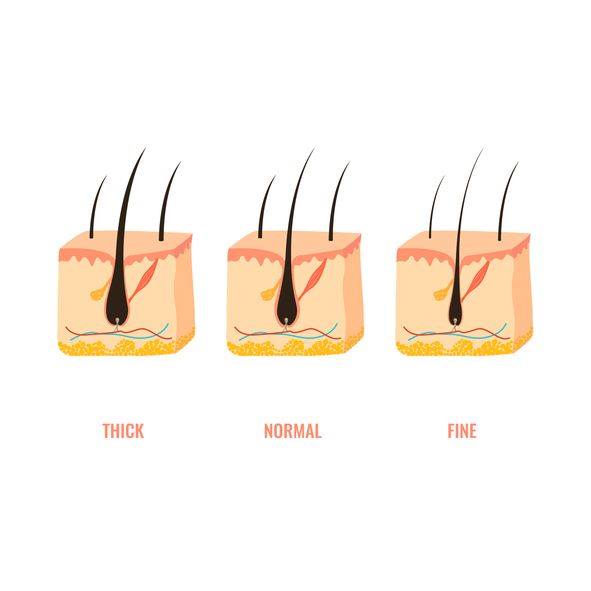
Vellus hair usually appears as fine, light-colored peach fuzz that covers most of the body. It helps regulate body temperature and protects the skin. However, sometimes vellus hair grows in unexpected ways—becoming thicker, darker, or appearing in unusual places. These changes can be cosmetic or a sign of underlying health issues, including hormonal imbalances or medical conditions.
What Normal Vellus Hair Growth Looks Like
Typical Growth Patterns
Vellus hair follows a natural growth cycle and changes over time. Some transformations are expected, especially during puberty, when androgens cause certain vellus hairs to become terminal hair. This is why males grow facial hair and body hair in areas like the chest and arms.
Other key facts about vellus hair growth include:
• Lanugo Hair Replacement: Before birth, the body is covered in lanugo hair, which is replaced by vellus hair around 36–40 weeks of gestation.
• Regional Growth Differences: Vellus hair grows at different rates across the body, with slower growth on the forehead (about 0.03 mm/day) and faster growth on the back (about 0.13 mm/day).
• Higher Facial Density: The face tends to have more vellus hair follicles than areas like the chest or limbs.
While these changes are part of normal development, some vellus hair growth patterns can indicate underlying conditions.
Signs of Unusual Vellus Hair Growth
1. When Vellus Hair Becomes Thicker or Darker
If vellus hair starts becoming thicker or darker in areas where it usually remains fine, it may be linked to hormonal shifts. Conditions like polycystic ovary syndrome (PCOS) in females or increased androgen levels can cause excessive hair growth in areas like the upper lip, chin, or neck.
2. Sudden Loss of Vellus Hair
While excessive growth is a concern, losing vellus hair unexpectedly can also indicate a problem. If vellus hair disappears from areas like the hairline or eyebrows, it could be linked to hormonal imbalances, stress, or conditions like alopecia.
3. Lanugo Hair in Adults
Lanugo hair is a soft, fine hair type that usually appears on fetuses and disappears before birth. If it reappears in adults, especially in cases of extreme weight loss or malnutrition, it may indicate an underlying medical condition.
Book Now to Experience
A3 Laser Hair Removal Treatment
1 Minute Self-Registration
Date should not be before minimal date

Get Rid of Unwanted Vellus Hair Naturally
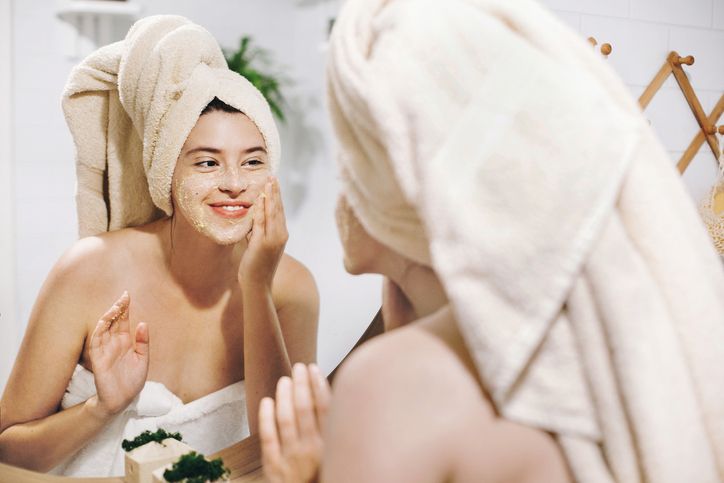
Vellus hair, or peach fuzz, is totally normal, but if you prefer smoother skin, there are natural ways to manage it. Simple skincare habits and at-home methods can help reduce its appearance without irritating your skin or damaging hair follicles.
Skincare Routine for Smoother Skin
1. Exfoliate to Make Vellus Hair Less Noticeable
Dead skin buildup can make peach fuzz stand out more. Exfoliating helps smooth the skin, making fine hairs blend in better.
• Use a mild exfoliant like lactic acid or glycolic acid to remove dead skin.
• A soft facial brush or konjac sponge gently buffs the skin without irritation.
• Avoid over-exfoliating—it can dry out or irritate the skin, making hairs more noticeable.
2. Hydrate and Protect Your Skin
Dry skin makes vellus hair more obvious. Keeping your skin moisturized helps create a softer, smoother look.
• A lightweight moisturizer with hyaluronic acid keeps the skin plump and hydrated.
• Sunscreen prevents sun damage, which can change how vellus hair appears.
• Drinking enough water keeps the skin healthy and reduces dryness.
Natural Ways to Remove Vellus Hair
1. Sugaring: A Gentle Alternative to Waxing
Sugaring is a natural way to remove vellus hair without irritation. It works similarly to waxing but is gentler on the skin.
• Made from sugar, lemon juice, and water, it’s completely natural.
• It pulls hair from the root, so results last longer than shaving.
• It doesn’t stick to live skin cells, making it less irritating for sensitive areas.
2. Tweezing for Small Areas
If you only have a few noticeable hairs, tweezing is a simple way to remove them. Since vellus hairs are fine, tweezing is usually painless. Just be mindful not to overpluck, as frequent pulling can sometimes make hair grow back thicker.
Supporting Healthy Hair Growth Naturally
Balance Your Hormones Naturally
Vellus hair growth is influenced by hormones, so keeping them in check can help prevent unwanted changes.
• Eat foods rich in vitamins A, C, and E to keep your skin and hair follicles healthy.
• Reduce processed sugars and refined carbs, which can impact hormone levels.
• Exercise regularly to help regulate hormones and reduce stress-related hair changes.
These natural methods can help manage peach fuzz without harsh treatments. But if you're looking for longer-lasting solutions, there are other options to explore. In the next section, we’ll cover professional treatments that can remove vellus hair effectively while keeping your skin healthy.

Professional Treatment Options for Unwanted Vellus Hair
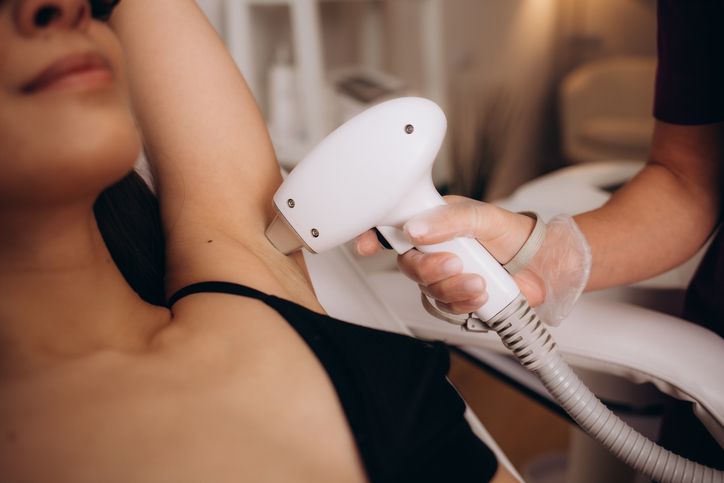
If you’re looking for long-term solutions to remove vellus hair, professional treatments can offer more lasting results than at-home methods. These treatments target hair follicles directly, reducing regrowth and helping you achieve smoother skin with minimal effort over time. The right option depends on your skin type, hair characteristics, and how permanent you want the results to be.
1. Electrolysis
How It Works
Electrolysis uses a tiny probe inserted into each hair follicle to deliver an electric current, destroying the follicle at its root. Unlike laser hair removal, electrolysis doesn’t rely on pigment, making it effective for all hair colors, including fine, light vellus hair.
Treatment Details
• Each hair follicle is treated individually, requiring multiple sessions.
• Permanently stops hair growth in treated areas.
• Works on all skin and hair types.
• Can cause slight discomfort, similar to a tingling or stinging sensation.
2. Professional Dermaplaning
How It Works
Dermaplaning is a manual exfoliation technique performed by a professional using a sterile surgical blade to remove vellus hair and dead skin cells. This method provides immediate smoothness without affecting hair growth.
Treatment Details
• Skin feels softer and looks brighter right after the procedure.
• Maintenance is needed every 4–6 weeks.
• Does not change the thickness or darkness of hair regrowth.
• Improves skincare absorption and makeup application.
3. Threading and Waxing
How They Work
• Threading removes hair using a twisted cotton thread, plucking strands from the root.
• Waxing applies a sticky substance to remove multiple hairs at once.
Both methods remove vellus hair for a few weeks before it starts growing back.
Treatment Details
• Threading is more precise, making it ideal for shaping facial hair.
• Waxing can cause irritation, especially on sensitive skin.
• Neither method provides permanent results but lasts longer than shaving.

A3 Laser Hair Removal: The Most Effective Way to Remove Vellus Hair for Smooth, Clear Skin
Vellus hair, or peach fuzz, plays a natural role in protecting and regulating the skin, but for those who prefer a smoother appearance, managing it can be frustrating. While natural methods like exfoliation and sugaring help reduce its visibility, they don’t stop the hair from growing back. Other temporary solutions, like waxing or threading, can cause irritation, while at-home laser devices often fail to target fine vellus hairs effectively.
For those looking for a longer-lasting solution, A3 Laser Hair Removal offers a more efficient way to reduce vellus hair growth at the root. Unlike traditional methods, this advanced treatment penetrates deep into the hair follicles, weakening their ability to regrow hair while keeping the skin smooth, clear, and irritation-free.
How A3 Laser Hair Removal Works for Vellus Hair
Step 1: Hair Analysis and Preparation
A beauty consultant assesses the thickness, density, and color of your vellus hair. A patch test ensures the laser energy won’t cause an adverse reaction. A protective gel is applied, and you’ll wear safety goggles to shield your eyes from the laser.
Step 2: Laser Treatment
The A3 Laser handpiece emits 808nm laser beams into the hair follicles. The laser targets melanin, penetrating the follicles and cutting off their nutrient supply by shrinking the tiny blood capillaries. This process weakens the follicles, stopping hair from growing back. The 10mm x 10mm square tip can treat up to 500 hairs per second, making the process fast and effective.
Step 3: Cooling and Skin Protection
Unlike traditional lasers that can cause redness or irritation, the A3 Laser handpiece has a built-in dual cooling system that soothes the skin while removing hair. This reduces irritation and prevents hyperpigmentation, leaving the treated area smooth, soft, and even-toned.
Why A3 Laser Hair Removal is the Best Choice for Vellus Hair
1. More Effective Than Other Hair Removal Methods
• Shaving only cuts the hair at the surface, making vellus hair grow back quickly.
• Waxing and sugaring remove hair from the root but can cause irritation and ingrown hairs.
• At-home laser devices are less powerful and often don’t work well on fine vellus hair.
• A3 Laser Hair Removal targets the follicle directly, reducing hair regrowth while keeping the skin healthy.
2. Covers Large Areas Quickly
The 10mm x 10mm handpiece removes vellus hair in all directions and treats a large area at once. This makes it faster than traditional laser treatments, which often have smaller applicators.
3. Painless with Dual Cooling Technology
Some laser treatments cause discomfort, but A3 Laser Hair Removal has a built-in dual cooling system, keeping the skin comfortable throughout the procedure. There’s no need for a separate cooling fan, and the treatment won’t leave your skin red or irritated.
4. Reduces Melanin Build-Up for Brighter Skin
Excessive shaving and other hair removal methods can lead to melanin accumulation, causing dark patches over time. The A3 Laser breaks down melanin particles, leaving your skin even-toned, fresh, and smooth.
Results Of A3 Laser Hair Removal
• Removes both fine and coarse hairs permanently
• Prevents bacteria buildup that can lead to breakouts and skin irritation
• Safe for all skin types and non-invasive, with no wounds or downtime
• Professional guidance to ensure the best results for your skin type
Is A3 Laser Hair Removal Right for You?
This treatment is suitable for most skin types, and a full course of 6–8 sessions is generally recommended for best results. There’s no long recovery period, so you can return to your routine immediately.
Ditch the razors and waxing strips—A3 Laser Hair Removal offers the results you’ve been looking for. Don’t hesitate and book your session now!
New Beauty's A3 Laser Hair Removal TreatmentBook Now to Experience
A3 Laser Hair Removal Treatment
1 Minute Self-Registration
Date should not be before minimal date
FAQ
Can Vellus Hair Turn Into Terminal Hair Naturally During Adulthood?
Yes, your vellus hair can naturally shift into terminal hair during adulthood, primarily due to hormonal changes in your body. While this transformation is most common during puberty, factors like pregnancy, hormonal conditions, and genetic predisposition can trigger the conversion in adults. The process varies substantially among individuals, and you'll find that only certain vellus hairs will make this shift, depending on your unique hormonal balance and genetic makeup.
Does Frequent Removal of Vellus Hair Make It Grow Back Thicker?
As persistent as this old wives' tale may be, frequent removal of vellus hair doesn't make it grow back thicker. You're actually experiencing an optical illusion when the hair grows back with a blunt tip from cutting, making it appear fuller. The structure and thickness of your vellus hair remain unchanged by removal methods, and only hormonal changes can naturally alter its characteristics.
At What Age Do Babies Start Developing Vellus Hair?
Your baby's vellus hair development begins during fetal development, with most vellus hair replacing lanugo hair between 36 to 40 weeks of gestation. After birth, you'll notice your baby going through a hair shift phase where they shed their initial hair, and vellus hair continues to develop. While all hair follicles form before birth, you'll see the progression of vellus hair throughout your baby's infancy.
Can Certain Medications Affect the Growth Pattern of Vellus Hair?
Studies show that over 30% of people taking certain medications experience changes in their vellus hair growth patterns. You'll find that various medications, including hormone therapy, minoxidil, and some antiepileptic drugs, can substantially affect your vellus hair. These medications might convert your fine vellus hairs into thicker terminal hairs, alter growth cycles, or increase overall hair density, though most changes are reversible after discontinuing the medication.
Does Vellus Hair Growth Differ Among Different Ethnic Groups?
Yes, vellus hair growth patterns substantially differ among ethnic groups due to genetic variations. You'll find that Asian populations typically have less dense vellus hair compared to those of European descent, while African populations often show distinct growth patterns. These differences are influenced by your genetic makeup, hormone levels, and evolutionary adaptations, which collectively determine the density, distribution, and characteristics of vellus hair across different ethnicities.
Recommended Articles
COPYRIGHT© NEW BEAUTY MANAGEMENT LIMITED 2025. ALL RIGHT RESERVED.

